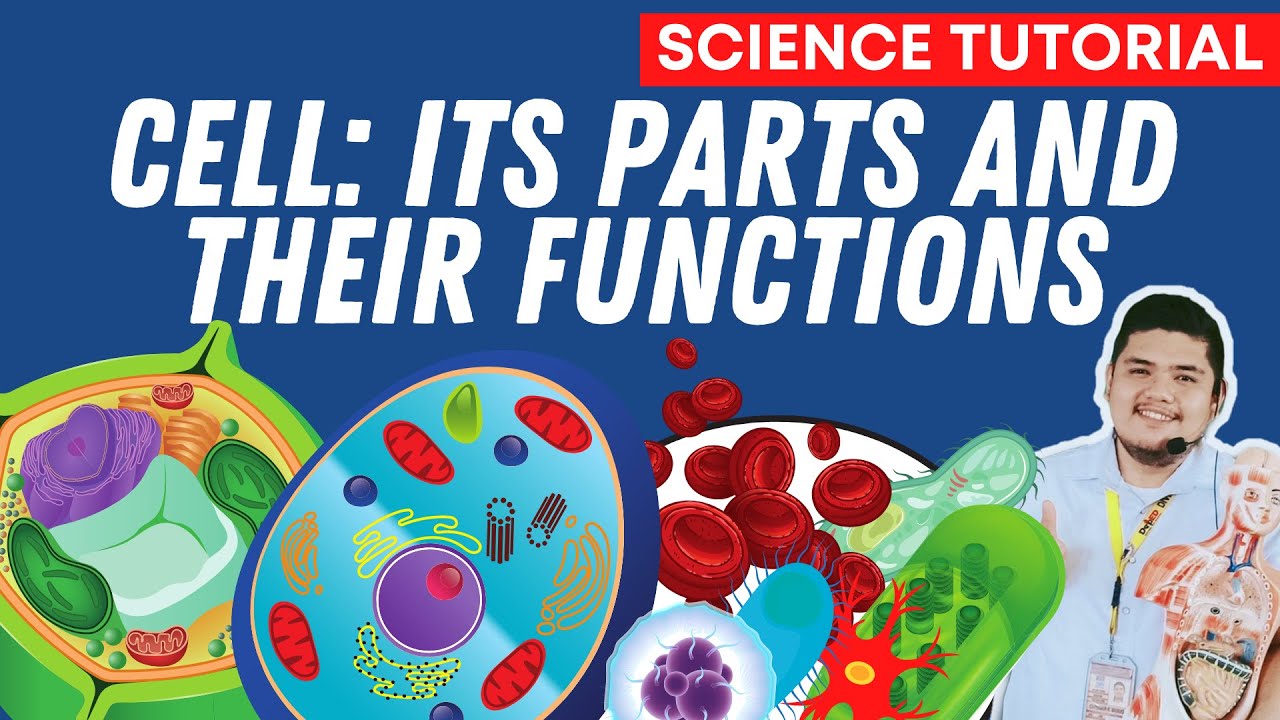Animal and Plant Cells eLearning Video Lesson for Kids
Summary
TLDRThe video discusses the basic structure and functions of cells, highlighting key components such as the nucleus, mitochondria, and cell membrane. It explains how the nucleus acts as the control center, sending messages to other parts of the cell, while mitochondria break down nutrients to release energy. The cell membrane regulates substance entry and protects the cell. Additionally, the video touches on plant cells, emphasizing unique structures like the cell wall and chloroplasts, which aid in photosynthesis. This educational overview aims to enhance understanding of cellular biology.
Takeaways
- 🧠 The nucleus acts as the control center of the cell, sending messages to other parts.
- 🔋 Mitochondria are the cell's powerhouse, breaking down nutrients to release energy.
- 💧 The cytoplasm is a jelly-like fluid that supports organelles and facilitates material movement.
- 🛡️ The cell membrane regulates the entry and exit of substances, providing protection.
- 🌱 Plant cells have a cell wall that adds strength and stiffness, which is absent in animal cells.
- 🌿 Chloroplasts in plant cells are essential for photosynthesis, converting sunlight into energy.
- 🧬 Each component of the cell has a specific function crucial for maintaining life.
- 🔄 The interactions between cell components enable growth, reproduction, and environmental response.
- ⚡ Energy released by mitochondria supports all cellular functions.
- 💡 Understanding these cell components helps in grasping basic biological concepts.
Q & A
What are the four main parts of a cell mentioned in the transcript?
-The four main parts of a cell mentioned are the nucleus, mitochondria, cell membrane, and in plant cells, the chloroplast and cell wall.
What is the primary function of the nucleus in a cell?
-The nucleus controls the other parts of the cell and acts like the brain by sending messages to various parts of the cell.
How do mitochondria contribute to cellular functions?
-Mitochondria break down fuel to release energy, which helps the nucleus and supports various cellular functions.
What role does the cell membrane play in a cell?
-The cell membrane controls the substances that enter and leave the cell and protects the cell itself.
What is the function of chloroplasts in plant cells?
-Chloroplasts help produce energy through photosynthesis by converting light energy into chemical energy.
What is the significance of the cell wall in plant cells?
-The cell wall provides strength and stiffness to plant cells, which is not found in animal cells.
What do cells store for energy, as mentioned in the transcript?
-Cells store nutrients and sugars as fuel for energy.
How does the cytoplasm relate to cellular function?
-The cytoplasm, described as jelly-like fluid, fills the cell and allows for movement and support of organelles within the cell.
What are organelles, and why are they important?
-Organelles are specialized structures within a cell that perform specific functions, contributing to the cell's overall operation and health.
How do cells interact with their environment according to the transcript?
-Cells interact with their environment through the cell membrane, which regulates the movement of substances and helps maintain the internal balance.
Outlines

Esta sección está disponible solo para usuarios con suscripción. Por favor, mejora tu plan para acceder a esta parte.
Mejorar ahoraMindmap

Esta sección está disponible solo para usuarios con suscripción. Por favor, mejora tu plan para acceder a esta parte.
Mejorar ahoraKeywords

Esta sección está disponible solo para usuarios con suscripción. Por favor, mejora tu plan para acceder a esta parte.
Mejorar ahoraHighlights

Esta sección está disponible solo para usuarios con suscripción. Por favor, mejora tu plan para acceder a esta parte.
Mejorar ahoraTranscripts

Esta sección está disponible solo para usuarios con suscripción. Por favor, mejora tu plan para acceder a esta parte.
Mejorar ahoraVer Más Videos Relacionados
5.0 / 5 (0 votes)






